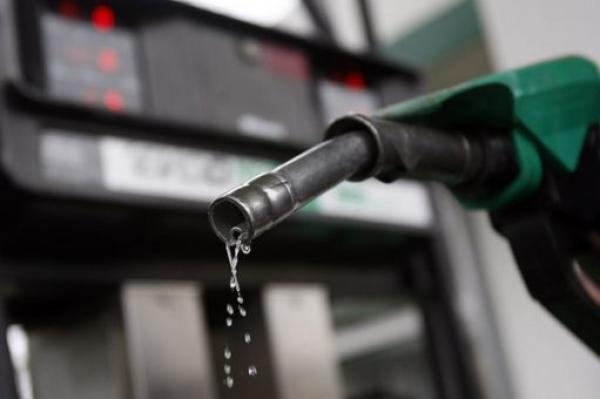
Crude Oil Pipeline
There appears to be a free fall on the price of crude oil in the global market as it dropped below $50 per barrel in the United States of America on Monday, thus recording a new five-and-a-half-year low, following a glut that has seen supply rising far above demand.
US benchmark West Texas Intermediate for February delivery, in free fall since June, ended at $50.04 a barrel, down $2.65 or five per cent. The contract got as low as $49.95 a barrel earlier in the session, its lowest level since May 1, 2009.
According to AFP, European benchmark Brent oil for February delivery fell $3.31 to $53.11 a barrel in London.
Meanwhile, economic growth remains uncertain in Europe and in many emerging economies, such as China and Brazil.
The International Energy Agency in December projected global crude inventories could rise by nearly 300 million barrels in the first six months of 2015. The agency also cut its demand outlook by more than 200,000 barrels a day for 2015.
Energy equities, by far the worst performing sector in the S&P 500 last year, suffered more pain yesterday. Dow member Chevron fell 4.0 per cent, while oil-services giant Schlumberger lost 2.6 per cent.
Key US oil companies like ConocoPhillips and shale producer Continental Resources have cut their drilling budgets for 2015.
Still, analysts expect US output to continue to rise this year, owing to investments that have already been made. That will put more pressure on crude prices.
As the United States shale oil boom continued to reduce the country’s imports, leaving excess stock in the market, Russia's crude oil production also hit a post-Soviet high at the end of 2014, averaging 10.58 million barrels per day (bpd), an increase of 0.7 per cent.
As a result of the increased domestic production of shale oil, the United States had slashed crude imports from a peak of almost 14 million barrels per day in 2006, to slightly above 7 million barrels per day, according to the Energy Information Administration (EIA), the country’s official source of energy information.
Crude oil supply to the global market will further build up in the coming months and worsen the excess supply situation as President Barak Obama’s administration last week bowed to growing pressure over a 40-year-old ban on exports of most domestic crude.
Obama was said to have taken two steps that would likely increase the flow of ultra-light oil, or condensate, into the global market.
Iraq also supplied excess to the international market as the country’s exports were at their highest since 1980 in December, 2014.
The two crude oil benchmarks – Brent and US light crude, also known as West Texas Intermediate – have lost more than half of their value since June 2014, when the Brent price hit $115 per barrel and US crude was sold above $107.
US crude settled down $2.65, or five per cent, at $50.04 a barrel, and was at a post-settlement low of $49.77. The last time US crude traded below $50 was in April 2009.
Brent closed down $3.31, or almost six per cent, at $53.11 a barrel, after it earlier dropped earlier to $52.66, its lowest since May 2009.
Despite the glut in the market, the Organisation of Petroleum Exporting Countries (OPEC) has refused to cut output to increase the price, insisting that the market should stabilise itself.
OPEC had at its last meeting in Vienna, Austria decided against a cutback to retain its market share against shale oil and other competing supply sources, despite its own forecasts of a growing surplus this year.
Despite the falling price, the Kingdom of Saudi Arabia maintained that the cartel will not cut production even if the price of oil drops to $20 a barrel.
“Whether it goes down to $20 a barrel, $40, $50, $60, it is irrelevant,” the kingdom’s Oil Minister Ali al-Naimi said in an interview with the Middle East Economic Survey (MEES), an industry weekly.
Saudi Arabia has traditionally acted to balance demand and supply in the global oil market because it is the only country with substantial spare production capacity, according to the International Monetary Fund (IMF).
The kingdom pumps about 9.6 million barrels per day but Naimi said it is “crooked logic” to expect his country to cut and then lose business to other major producers outside OPEC.
Saudi had won the argument at the OPEC meeting, against the wishes of ministers from OPEC's poorer members such as Venezuela, Iran and Algeria which had wanted to cut production to reverse a rapid fall in oil prices.
The poorer members, who were however not prepared to offer big cuts themselves, yielded to Saudi's pressure to avoid a clash with the Saudis and their rich Gulf allies.
Naimi spoke about market share rivalry with the United States, making those who wanted a cut to understand that there was no option to achieve it because the Saudis want a market share battle.
As the price continues its free fall, concern has been raised on the capacity of the Nigerian government to finance the 2015 budget.
Since the oil price began its free fall, the federal government has revised the 2015 budget benchmark three times, yet the price has already fallen below the government’s final projection of $65 per barrel.
In the first Medium Term Expenditure Framework (MTEF) and fiscal strategy presented in September 2014, the government had proposed a benchmark of $78 per barrel of crude oil for 2015 budget, with an exchange rate of N160 to a dollar and a total budget figure of N4.8 trillion.
The government later reduced the benchmark from $78 to $73 per barrel, with an exchange rate of N162 to a dollar and a total projected budget figure of N4.7 trillion.
But with further fall in the oil prices, the benchmark was further reduced to $65 per barrel, with an exchange rate of N165 to a dollar and a total budget figure of N4.357 trillion for the 2015 fiscal year.






















